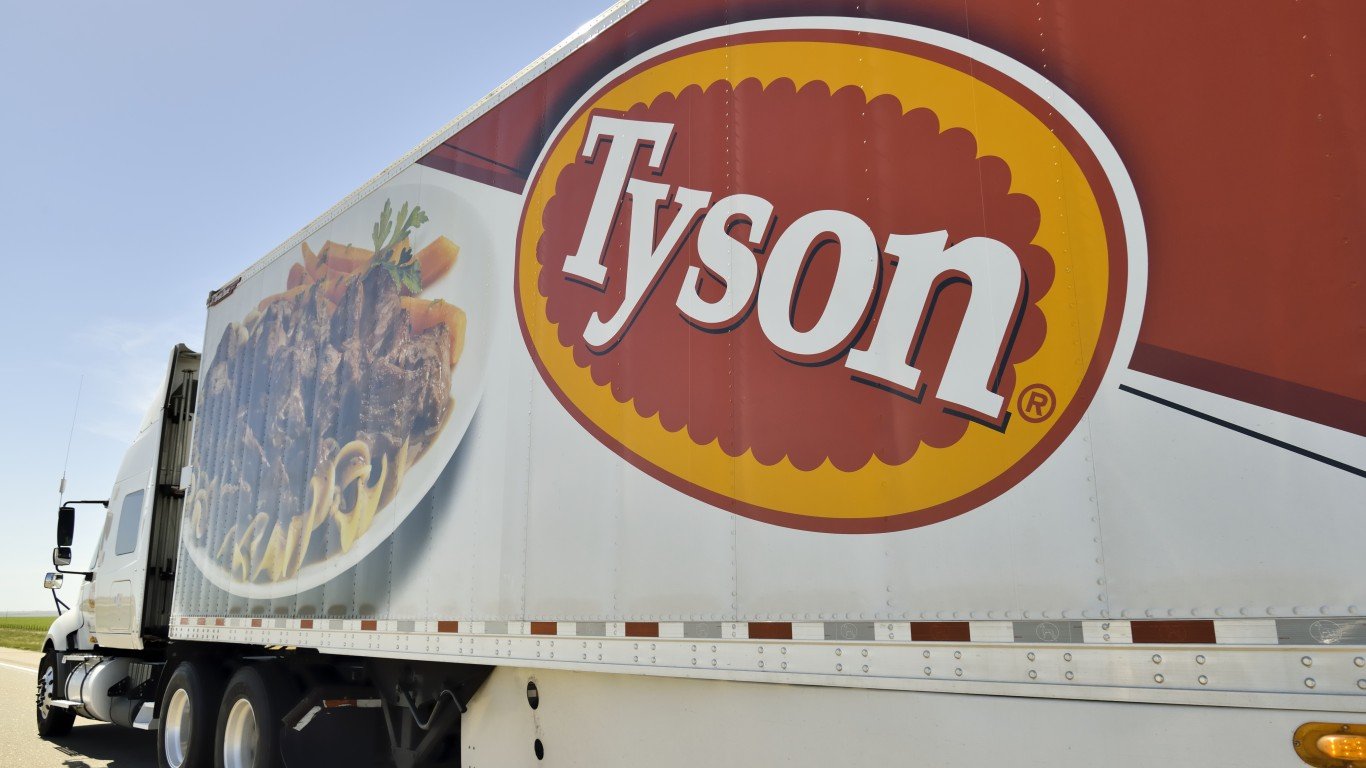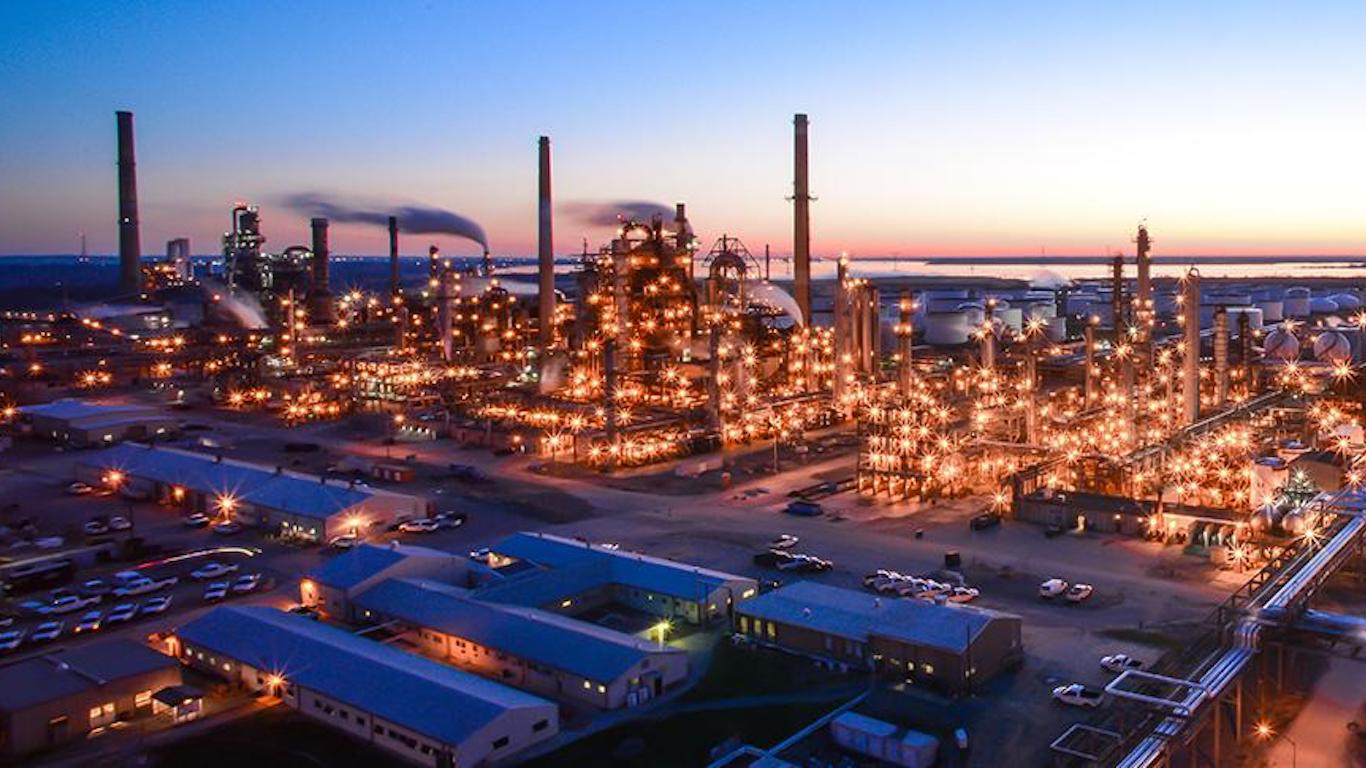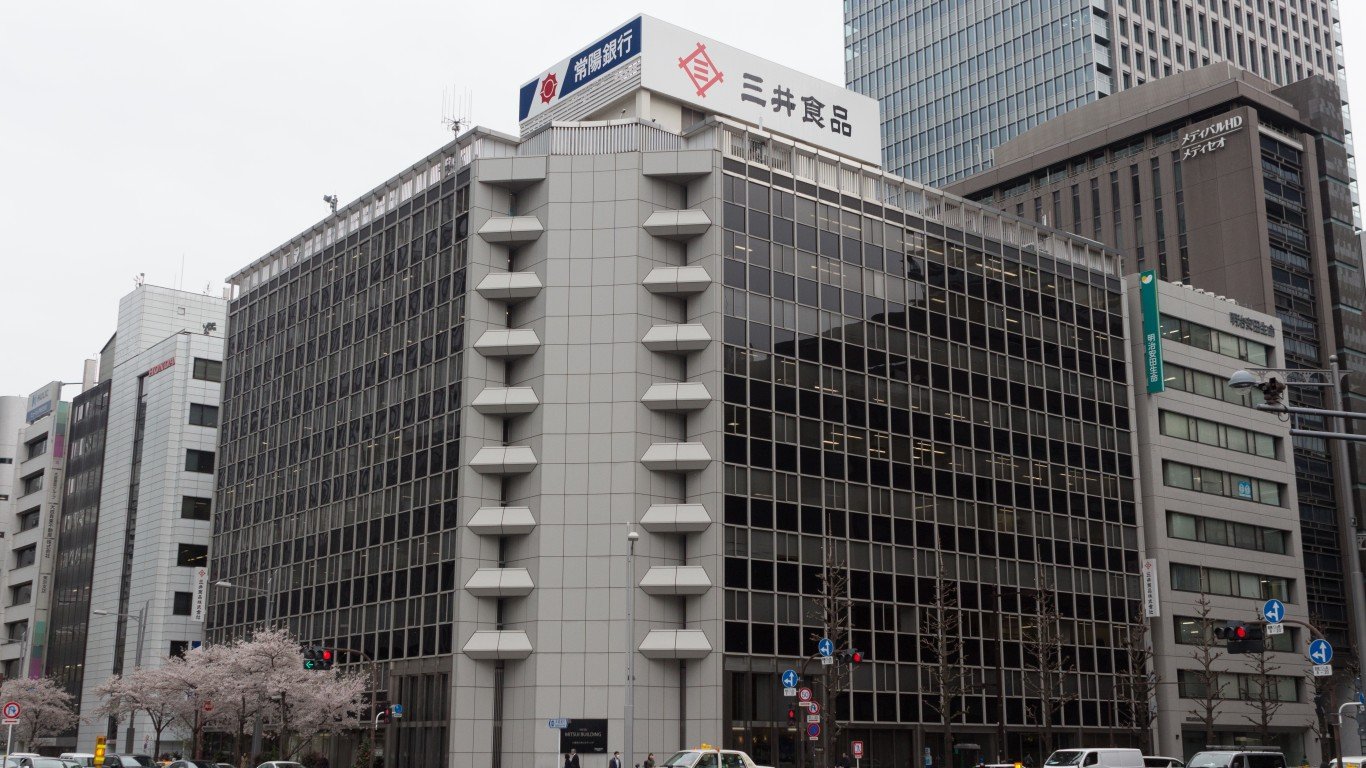
35. Tyson Foods
> Toxic hazard (pounds released x toxicity): 422,885,678
> Environmental justice, poor population share 17% – #89 highest out of 100 corporations
> Environmental justice, minority population share 20% – #62 highest
> Pct. of toxic hazard from a single facility: 96% – #40 highest
The world’s largest chicken processor and a $4 billion family business, Tyson foods kills 25 million chickens a week at its main plant in Springdale, Arkansas. The wastewater from its operations, containing both chemicals and animal waste, has contributed to high pollution levels in the 600 miles of streams in the northwestern part of the state, making the water in half of those miles undrinkable and unswimmable.

34. PBF Energy
> Toxic hazard (pounds released x toxicity): 439,908,086
> Environmental justice, poor population share 31% – #50 highest out of 100 corporations
> Environmental justice, minority population share 41% – #30 highest
> Pct. of toxic hazard from a single facility: 89% – #50 highest
Three out of six of PBF’s refineries are in poor, heavily minority communities. However, the refinery with the company’s largest releases of toxic wastewater is its Torrance facility in California, which is an outlier for the petrochemical industry generally, as it is located in a relatively upscale region.

33. Mitsui
> Toxic hazard (pounds released x toxicity): 474,482,142
> Environmental justice, poor population share 40% – #20 highest out of 100 corporations
> Environmental justice, minority population share 55% – #16 highest
> Pct. of toxic hazard from a single facility: 100% – #1 highest
Virtually all of Mitsui’s toxic wastewater is released by the company’s subsidiary, Denka Performance Elastomer Ltd., formed when Mitsui purchased DuPont’s neoprene polychloroprene business in Louisiana in 2015. It is located in a largely poor, minority neighborhood. The most dangerous chemical in the wastewater is 1,4-Dichloro-2-butene, considered acutely toxic, corrosive, a likely human carcinogen, and highly toxic to aquatic life. The plant releases about 51 pounds of the chemical compound into local surface waters every year.
32. International Paper
> Toxic hazard (pounds released x toxicity): 558,086,650
> Environmental justice, poor population share 37% – #30 highest out of 100 corporations
> Environmental justice, minority population share 32% – #42 highest
> Pct. of toxic hazard from a single facility: 27% – #97 highest
Incorporated in 1898, International Paper is the largest pulp and paper company in the world, operating over two dozen mills in the United States. It takes pride in its sustainability. Sixty-nine percent of its business is commercial packaging, with processes that recycle 7 million tons of cardboard and paper every year.

31. Chevron
> Toxic hazard (pounds released x toxicity): 561,582,366
> Environmental justice, poor population share 23% – #78 highest out of 100 corporations
> Environmental justice, minority population share 27% – #50 highest
> Pct. of toxic hazard from a single facility: 62% – #75 highest
Chevron operates 15 refineries, terminals, and chemical plants in the United States that require permits for water pollution, two of which, one in Texas and the other in Mississippi, release almost 62% of the company’s toxic wastewater. The Texas refinery was out of compliance with its water permits in five of a recent 12 quarters, and the Mississippi plant in two.

 24/7 Tempo
24/7 Tempo





